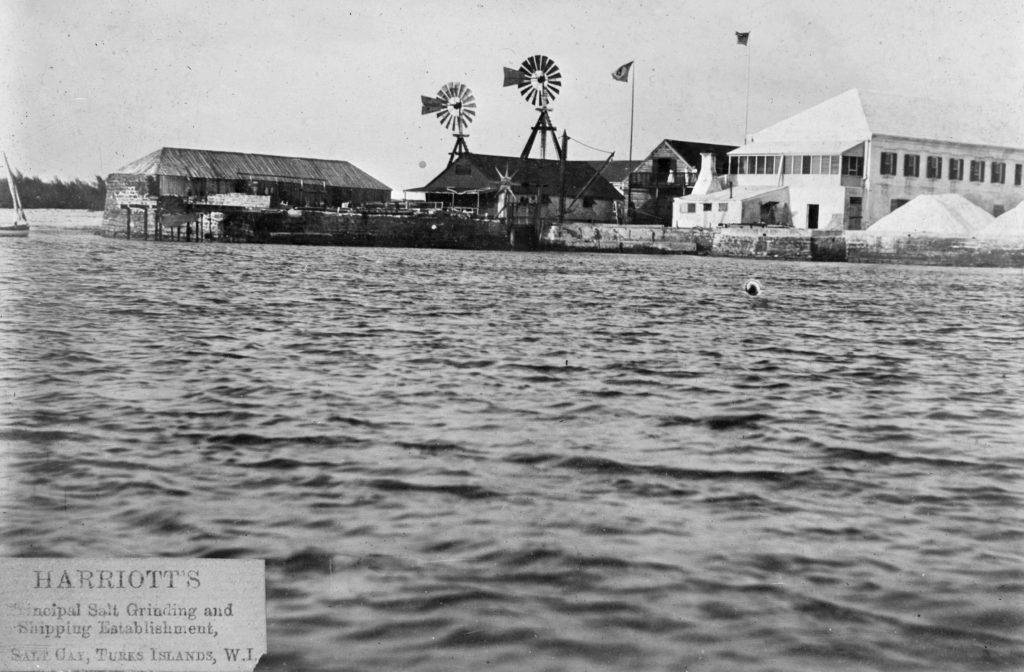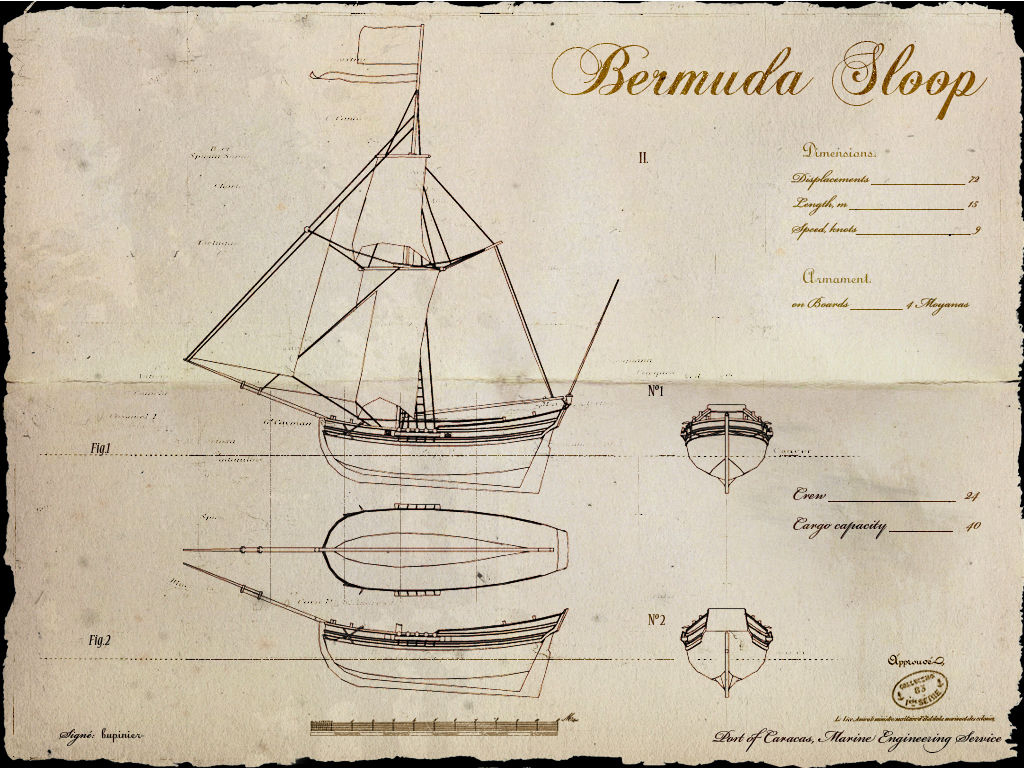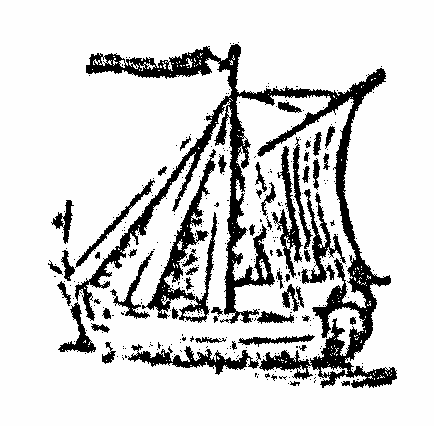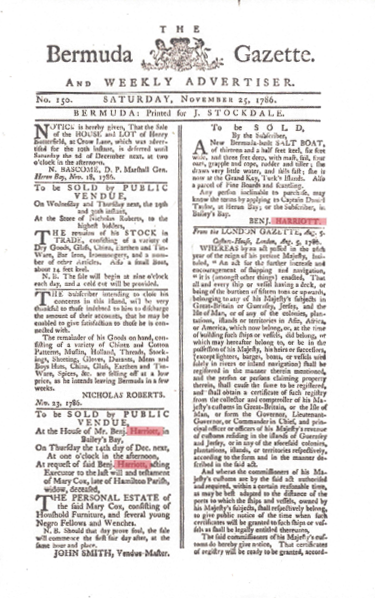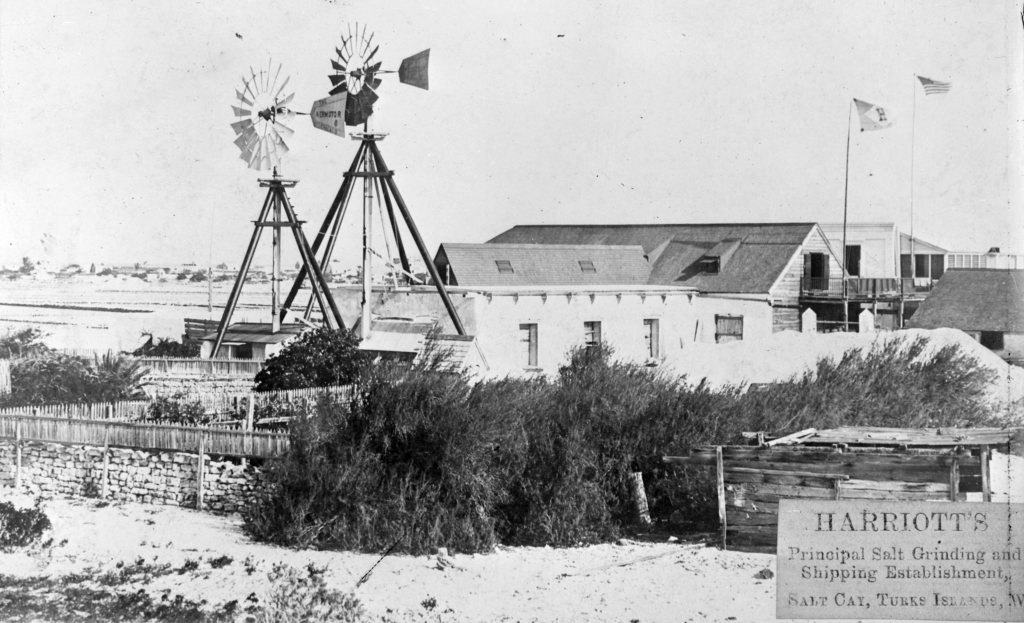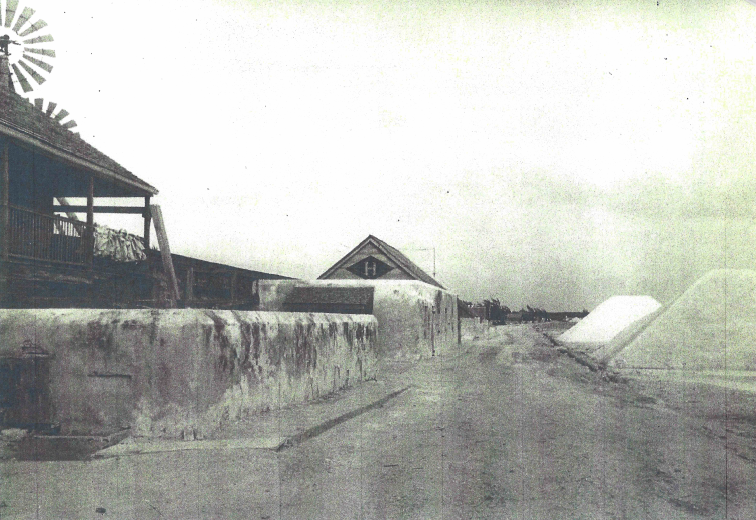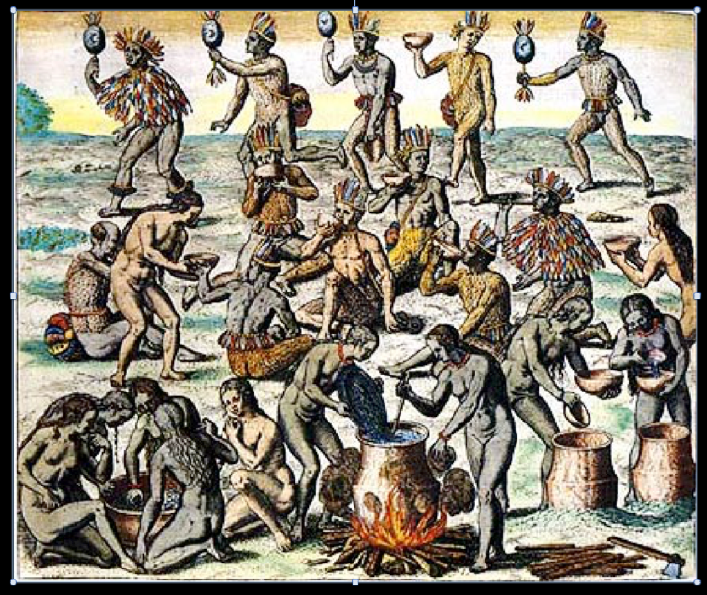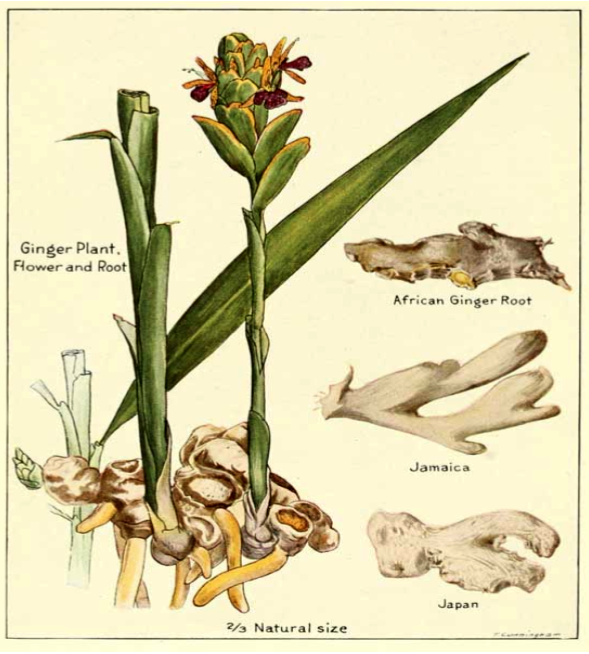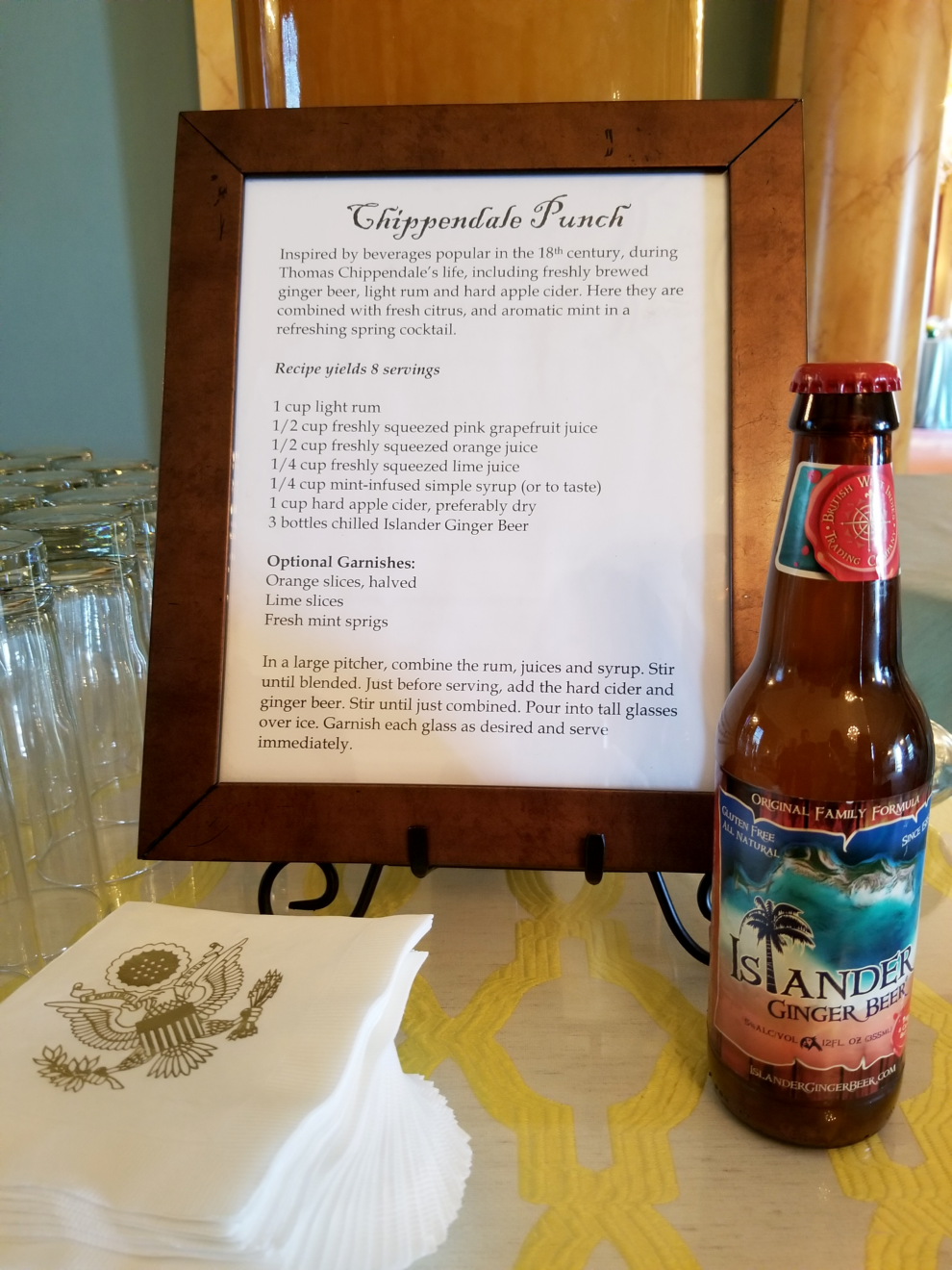
 rewing since 1585, Harriott’s Islander Ginger Beer, Lemon Mimosa, Mango Mimosa and Orange Turmeric Beer/Mimosa are not just products with a story. The beverages are the story. They were my family’s beverages of choice for generations and as a tribute to our way of life, all are based on island traditions which date back centuries. I wanted you to experience what my family was enjoying and because of this, they have the highest quality ingredients prepared with the greatest of care. Even the packaging pays tribute to those who came before us. When you reach for the can, you will see the actual signature of Daniel Harriott, my grandmother’s great grandfather who managed the family salt business beginning in his early 20s and built the ancestral home which remains in the family to this day. This page includes the Harriott “H” that was used throughout the family business. The diamond-shaped design was imprinted on stationary, salt bags, and structures. It even adorned the flag, raised above the family port and commercial complex to notify passing ships that the Harriott’s were home and open for business.
rewing since 1585, Harriott’s Islander Ginger Beer, Lemon Mimosa, Mango Mimosa and Orange Turmeric Beer/Mimosa are not just products with a story. The beverages are the story. They were my family’s beverages of choice for generations and as a tribute to our way of life, all are based on island traditions which date back centuries. I wanted you to experience what my family was enjoying and because of this, they have the highest quality ingredients prepared with the greatest of care. Even the packaging pays tribute to those who came before us. When you reach for the can, you will see the actual signature of Daniel Harriott, my grandmother’s great grandfather who managed the family salt business beginning in his early 20s and built the ancestral home which remains in the family to this day. This page includes the Harriott “H” that was used throughout the family business. The diamond-shaped design was imprinted on stationary, salt bags, and structures. It even adorned the flag, raised above the family port and commercial complex to notify passing ships that the Harriott’s were home and open for business.
Realizing that people loved the story just as much as the role that the beverages played within the story, I created the British West Indies Trading Company as the home to share both. It is an epic tale. And our alcohol of choice serves as the portal. Now let me take you back to the place and time it all began with the Age of Exploration….
A Family Enterprise
 he British West Indies Trading Company has its origins as a family enterprise, which invested in overseas ventures. These early investors, or “adventurers,” formed the first stock exchanges and insurance companies to pool their shipping risks and mitigate losses from overseas global trade. They were also the earliest explorers. As an extension of the Silk Road, a complex network of trade routes connecting Asia with Europe, over the centuries they made exotic and expensive items more accessible, affordable, and therefore available, to all.
he British West Indies Trading Company has its origins as a family enterprise, which invested in overseas ventures. These early investors, or “adventurers,” formed the first stock exchanges and insurance companies to pool their shipping risks and mitigate losses from overseas global trade. They were also the earliest explorers. As an extension of the Silk Road, a complex network of trade routes connecting Asia with Europe, over the centuries they made exotic and expensive items more accessible, affordable, and therefore available, to all.
The family legacy continued with Thomas Harriott, who in the 16th century, explored the New World on behalf of Queen Elizabeth I. Known as the Galileo of Great Britain, he was a brilliant astronomer, mathematician, scientist and linguist. Charged with numerous responsibilities, his survey work resulted in some of the most accurate maps the world had ever seen.
As the chronicler of the expedition, he taught himself the Algonquin language, and his detailed writings of the way of life of the indigenous population in the mid-Atlantic region, now reside in the Smithsonian for all to appreciate and study. He also created an alphabet for their oral language, to record their names of places and geographical features. When he decided to apply their names to his maps, rather than the names of the powerful and the wealthy (the practice of the time) it then gave permanence to names of sites across the Eastern seaboard. As a result, names populate our maps of the North Carolina Outerbanks such as Croatan highway and the town of Manteo on Roanoke island. In Virginia, names such as Chesapeake, Rappahannock and Potomac live on with us today.
It is from his writings titled, “A Briefe and True Report of the New Found Land of Virginia” that we know the indigenous tribes of North America neither fermented nor distilled alcoholic beverages. In his work, he describes how he applied his brewing practices, fermenting indigenous corn, making him the first brewer on record in North America.
His contemporaries, such as Captain Cooke and his crew, were doing the same on the other side of the globe. Their first order of business when they reached the Pacific Islands was to gather the fruit, leaves and bark from the palm trees and collect water from a nearby spring to ferment into beer.
In North America, Thomas Harriott found a different a fermentable – the grain cultivated by the indigenous population called Maize by West Indian cultures, Pagatowr by the Algonquins, and today known as corn. Harriott described that it had a white, sweet flower with kernels ranging in color from white, red, yellow to blue from which he made malt and then brewed to make “as good ale as was to be desired.”
Returning to England he presented his findings to the Queen, but he was never to return. His deep and abiding interest in the other side of the Atlantic remained. In the years to come, his research is written in both his native language as well as the words of the Algonquin tribes.
His legacy lives on through the subsequent generations of Harriotts beginning with his son, Thomas Harriott the Younger who settled Bermuda in 1615. He and his sons established a thriving ship building and maritime trading business.
 ubsequent generations went on to settle the Caribbean establishing numerous enterprises in the British West Indies, including Jamaica, ‘the land of many springs’ and then the Turks & Caicos Islands where island families produced salt for the U.S. and Canada, from the mid-1600s through the 20th century.
ubsequent generations went on to settle the Caribbean establishing numerous enterprises in the British West Indies, including Jamaica, ‘the land of many springs’ and then the Turks & Caicos Islands where island families produced salt for the U.S. and Canada, from the mid-1600s through the 20th century.
Important for food preservation prior to refrigeration, Turks Island salt was shipped across the Eastern seaboard to families such as the Smithfields of Smithfield Hams. Its quality was so superlative that George Washington specifically requested Turks Island salt for his troops at Valley Forge, the turning point of the Revolutionary War. At the height of production, the islands produced more than 75 percent of the salt to North America and was shipped to ports by well-known sea captains such as Jimmy Buffet’s grandfather, which his grandson describes in “A Pirate Looks at 50.”
Their industrious spirit lives on today with well known names such as with the United Fruit Company and Morton’s Salt. The Bahamian island of Inagua, where the family developed highly efficient salt production infrastructure, today is recognized as the 3rd largest producer of salt in the world.
Their way of life in the islands as a salt producing and seafaring community has been perfectly preserved throughout the centuries. The island of Salt Cay, including the Harriott historic home, is considered by Williamsburg scholars as “Colonial Williamsburg South.”
The footprints of 13 generations of Harriotts have been preserved in great detail across numerous archives. Living in desolate and often dangerous areas, it is clear that they were risk takers. Filled with determination and perseverance, hard work was the hallmark of their way of life. And their island living dating back 450 years, including their alcohol traditions, remain with us to this day.
And what were their fermented beverages of choice?
Unlike the beverages on the other side of the Atlantic, they were rooted in the agricultural practices of the indigenous cultures of the Caribbean Basin. A region dominated by tropical produce, fresh fruit with spices became the fermentables for beer.
Building Upon Tradition
 eginning with the Carib Indians, island communities made beer from the root of the manioc plant (also known as Cassava), as well as sweet potatoes (called Ma’bi by Caribs and Mobbie by Europeans).
eginning with the Carib Indians, island communities made beer from the root of the manioc plant (also known as Cassava), as well as sweet potatoes (called Ma’bi by Caribs and Mobbie by Europeans).
With the arrival of Europeans, imports of beer, wine and spirits were found to be so expensive that they were unaffordable. Therefore, indigenous beer was adopted across the West Indies and sweet potato beer became one of the most popular drinks in both the French and British Caribbean. The French West Indies added fruit, such as sliced pineapple or oranges cut into quarters, for variation. Mangos were brought to the islands from the Pacific and Indian Ocean regions.
The Spanish built upon these traditions when they brought cane sugar to the region. Cultivated in Asia since 8000 BC, cane arrived to Caribbean island shores in the late 1400s/early 1500s where it grew prolifically in a climate similar to its native origins.
The Spanish preference for cane sugar over sweet potatoes as a fermentable, made it increasingly dominant in their culture. Other Europeans adopted their practices, finding they could successfully raise the level of alcohol by increasing the amount of potatoes as well as adding cane. Molasses, a byproduct of cane, also was added for additional alcohol and flavor.
Fruit such as lemons, limes, and mangos as well spices such as cloves, nutmeg, cinnamon and ginger, followed the same path and were added to food as well as beverages making them healthy as well as delicious.
Of note, the British pirate, Sir Francis Drake during his 1586 voyage, adapted aboriginal “bush medicine” and brewed cane, citrus and mint to create a drink called El Draque, today known as the Mojito.
These fermented beverages were unique to island living and defined the Caribbean culture, just like the French and their fine wines. To pay our respects to those who came before us and to preserve our household staples, the British West Indies Trading Company ensures they are made true to their roots. There are no artificial colorings, flavorings or preservatives. Instead, it is a short list of the highest quality ingredients which includes only what was available to Thomas Harriott during the 1585 voyage when he made his first batch of beer.
America’s Beer
 hile it was being served at bars and restaurants in the islands, demand in the U.S. for the beverages grew, starting with the health conscious customer – including the gluten free communities – who wanted both convenience and quality from the beer aisle. It is they who describe them as “good for you beer.” Then beer mixology arose and they became the mixer of choice for the customer who “doubled down” for a “high octane” quality cocktail. Islander Ginger Beer, in particular, became customers’ mixer of choice. Called a “Moscow Mule in a bottle,” it has the same ingredients as this popular cocktail without the cheap, artificial fillers.
hile it was being served at bars and restaurants in the islands, demand in the U.S. for the beverages grew, starting with the health conscious customer – including the gluten free communities – who wanted both convenience and quality from the beer aisle. It is they who describe them as “good for you beer.” Then beer mixology arose and they became the mixer of choice for the customer who “doubled down” for a “high octane” quality cocktail. Islander Ginger Beer, in particular, became customers’ mixer of choice. Called a “Moscow Mule in a bottle,” it has the same ingredients as this popular cocktail without the cheap, artificial fillers.
Then the historical community started calling. Because of the deep ties to the founding of the country, the Office of Protocol for the U.S. State Department serves Islander Ginger Beer in their Diplomatic Reception Rooms as they said it was the best of its class in the country. The Ambassador to Singapore kindly commented that it was the best in the world. It is also served at cultural destinations such as Monticello, Mt.Vernon and Colonial Williamsburg.
Rich in history and tradition, it is hoped they will be enjoyed by others around the world. Equally important, we are all standing on the shoulders of giants who came before us and every family has their own remarkable story to share. I hope that in their own modest way, these beverages will encourage others to record their community’s way of life for all to appreciate, remember and share with others to enjoy.
More detailed content is available by lecture at the request of local museums and historical societies.
Contact: Georgia@BWITradingCompany.com
Additional details also are available through the following publications:
Smith, Frederick H., Caribbean Rum: A Social and Economic History, Gainesville, University Press of Florida, 2005
Smith, Frederick H., The Archaeology of Alcohol and Drinking, Gainesville, University Press of Florida, 2008

